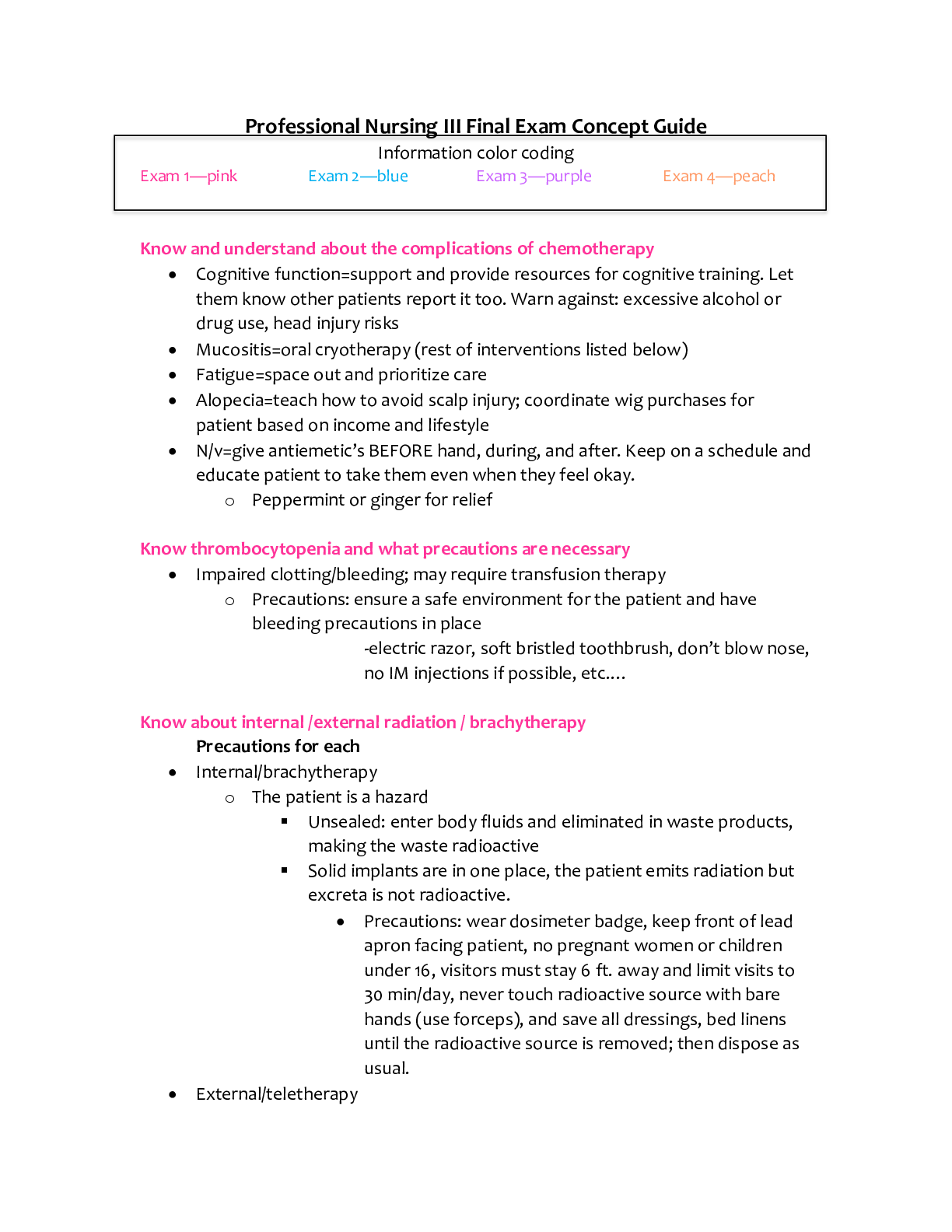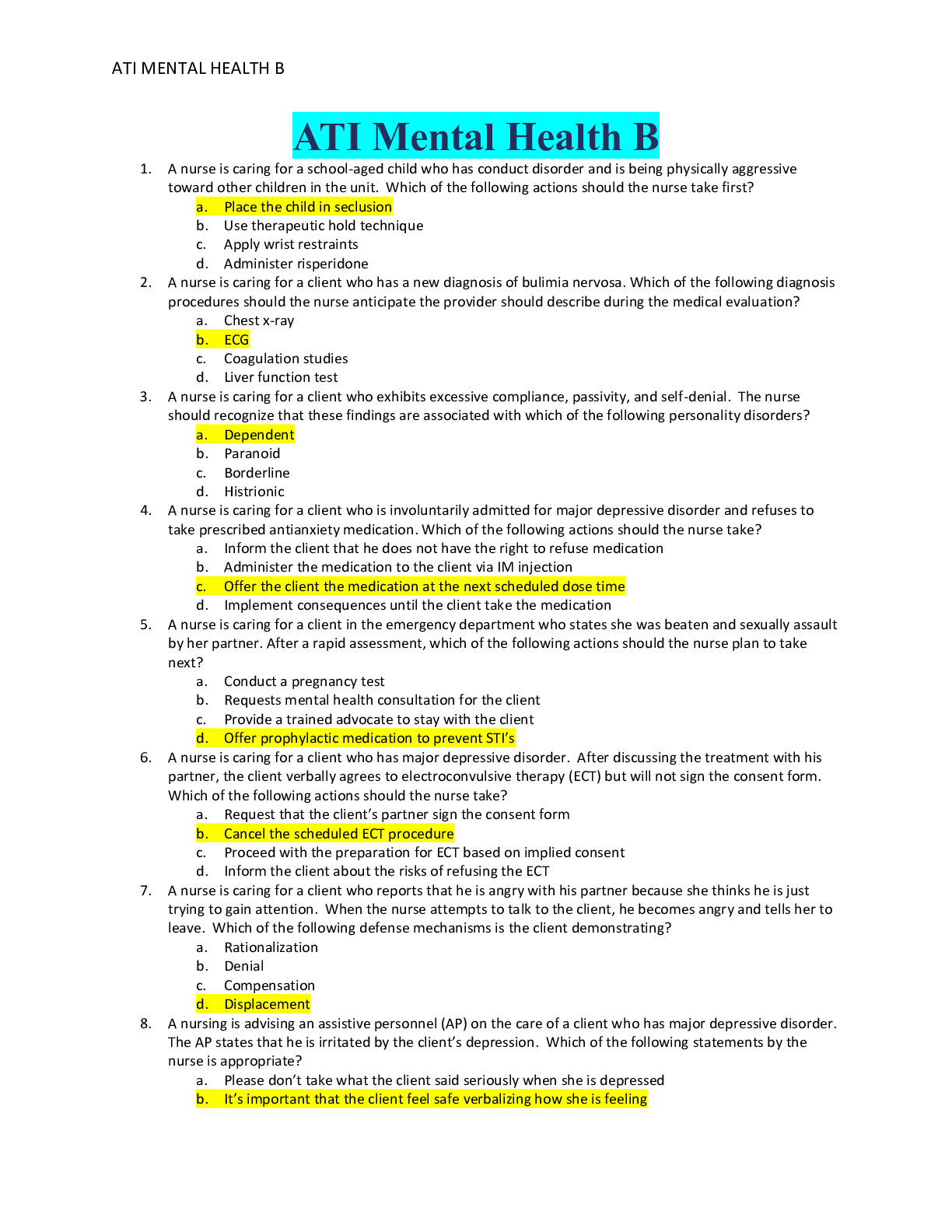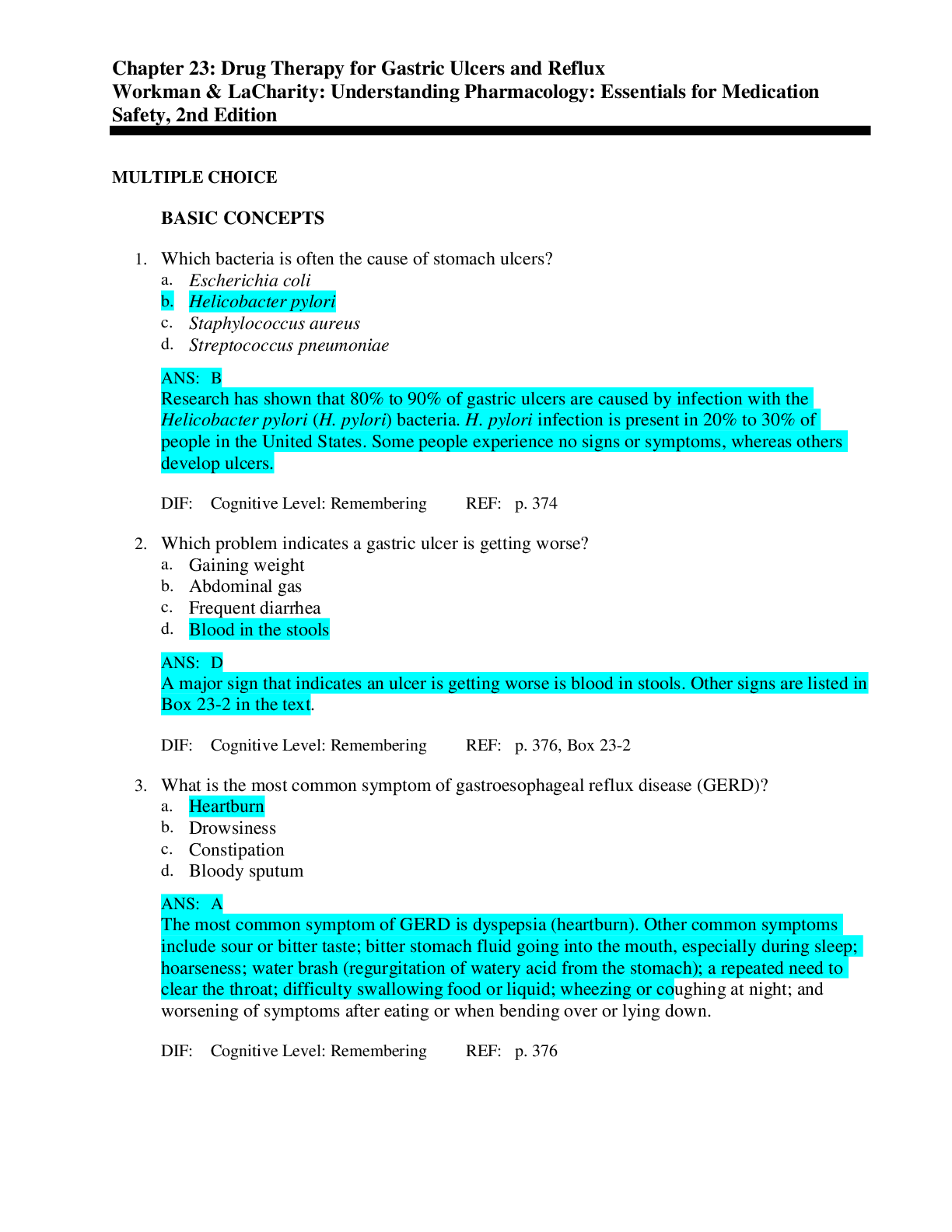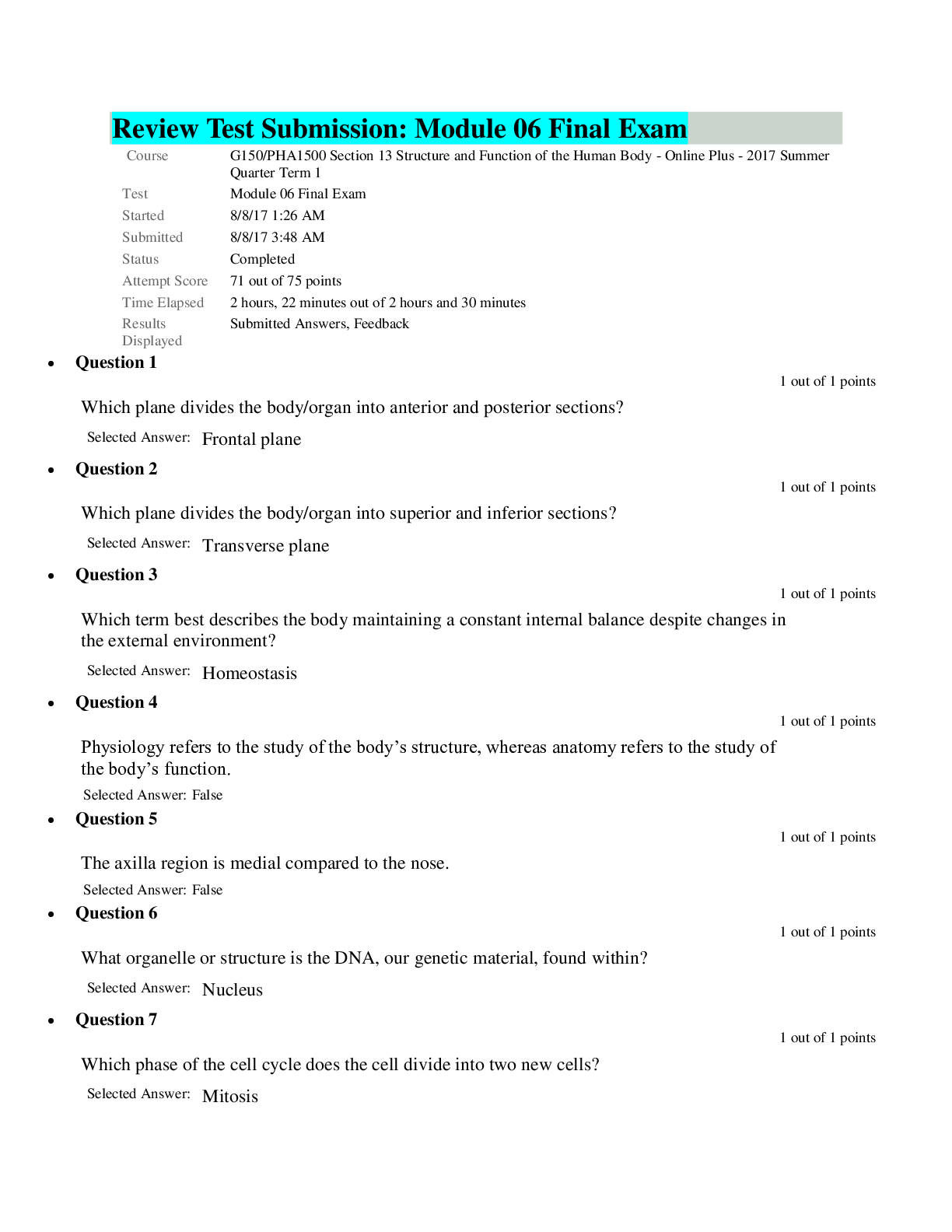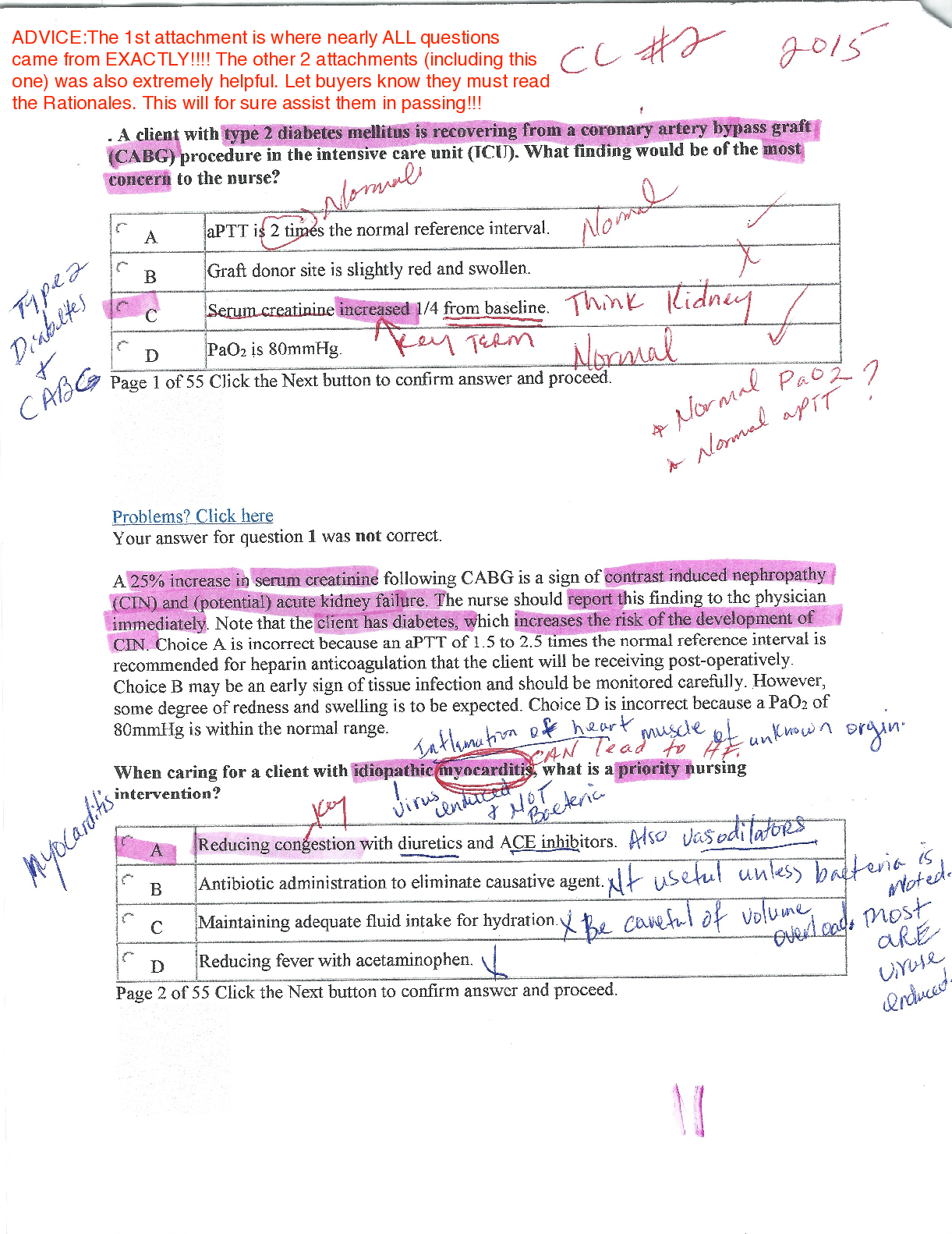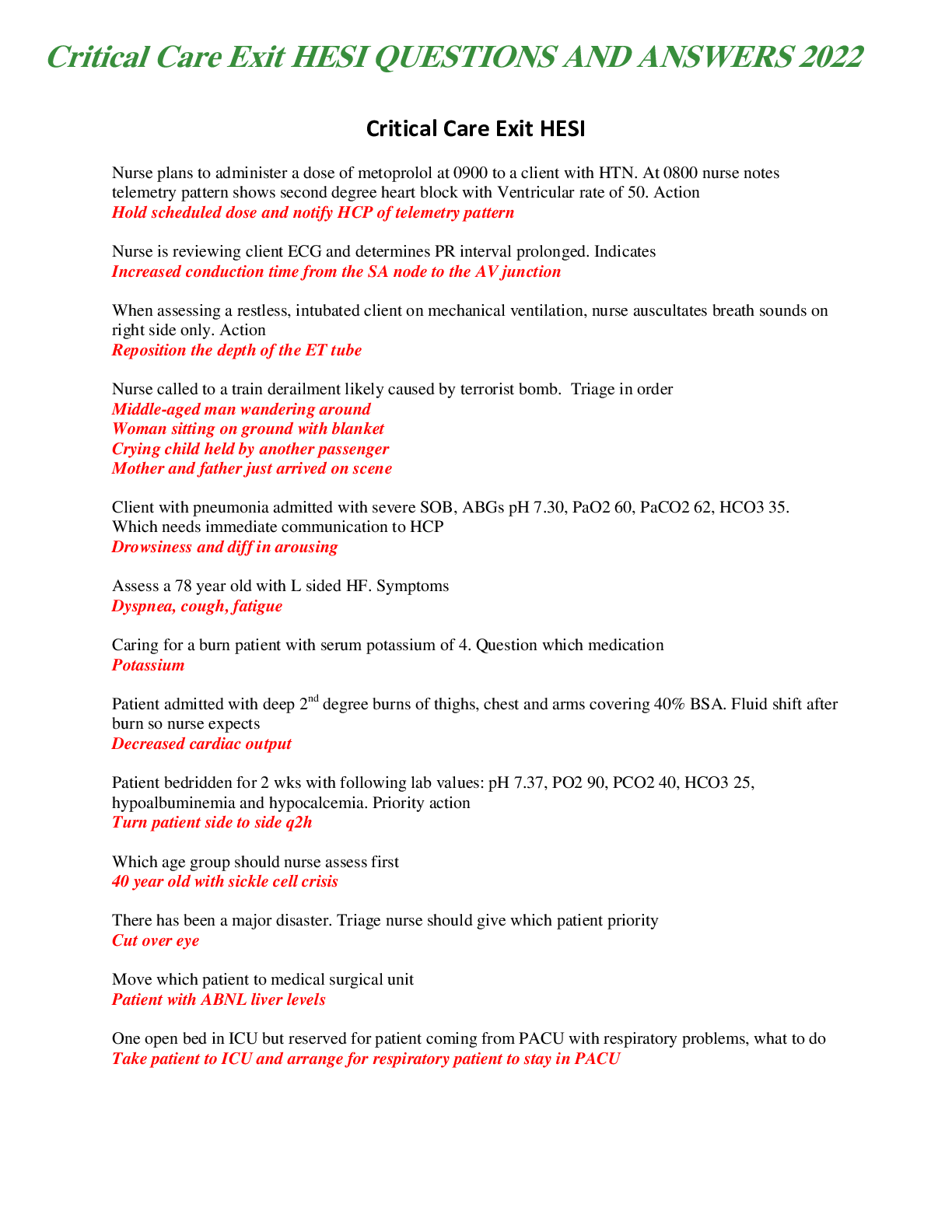Communication > QUESTIONS & ANSWERS > CSD 212 Clinical Case Study #3 I. Mr. Westrich (Complete solution) (All)
CSD 212 Clinical Case Study #3 I. Mr. Westrich (Complete solution)
Document Content and Description Below
CSD 212 Clinical Case Study #3 I. Mr. Westrich (pages 345-346) 20 pts. Mr. Westrich, age 76, reported that he has difficulty understanding his wife and grandchildren when they talk. He also has diffic... ulty understanding speakers on television. He suggested that “all newscasters must go to the same school of mumbling.” At family gatherings, he relies on his wife to repeat what people have said and often gets left out of conversations. He was a pilot in the military for thirty years and enjoyed hunting before he retired. Figure 12.15 displays his audiogram and word-recognition ability. 1. Identify the type of hearing loss Mr. Westrich has. Patient presents with a bilateral, symmetric, moderate to profound, degree of sensorineural hearing loss. 2. List 2 factors that are likely to have contributed to Mr. Westrich’s hearing loss. He was a poilt in the military for 30 years and enjoying hunting. Both activities have a lot noise and will cause damage to the hair cell. 3. What types of speech sounds will be the most difficult for Mr. Westrich to understand? Higher frequency or higher pitch is the type of speech sounds that Mr. Westrich to understand. 4. Is Mr. Westrich a candidate for amplification? Why or why not? I think Mr. Westrich is a candidate for amplification. Since his hearing loss is mild to profound, and he also gets left out of the conversation, a hearing aid will help to lift his living quality. 5. List 2 communication strategies Mr. Westrich might use when communicating. 1, Tell other people around him to speak louder and more slowly in order for him to understand. 2, Read about the report or summary before seeing a movie in order to be able to follow the plot. II. Famous Person Profile 30 pts. a. Single-paragraph biography of an individual (e.g, political figure, entertainer, athlete, etc.) who has brought public awareness (positive or negative) to the disorder represented in the case study. b. The paragraph should discuss how that person has brought awareness to the disability (e.g., writing a book, acting as a public spokesperson, enacting government action, etc.) [Show More]
Last updated: 1 year ago
Preview 1 out of 2 pages
Instant download

Buy this document to get the full access instantly
Instant Download Access after purchase
Add to cartInstant download
Reviews( 0 )
Document information
Connected school, study & course
About the document
Uploaded On
Dec 17, 2020
Number of pages
2
Written in
Additional information
This document has been written for:
Uploaded
Dec 17, 2020
Downloads
0
Views
154

.png)


